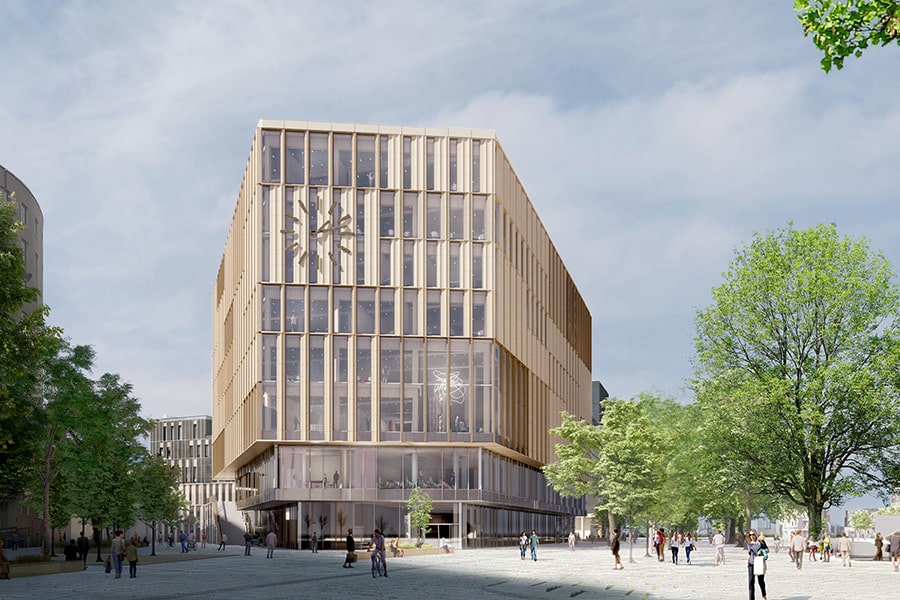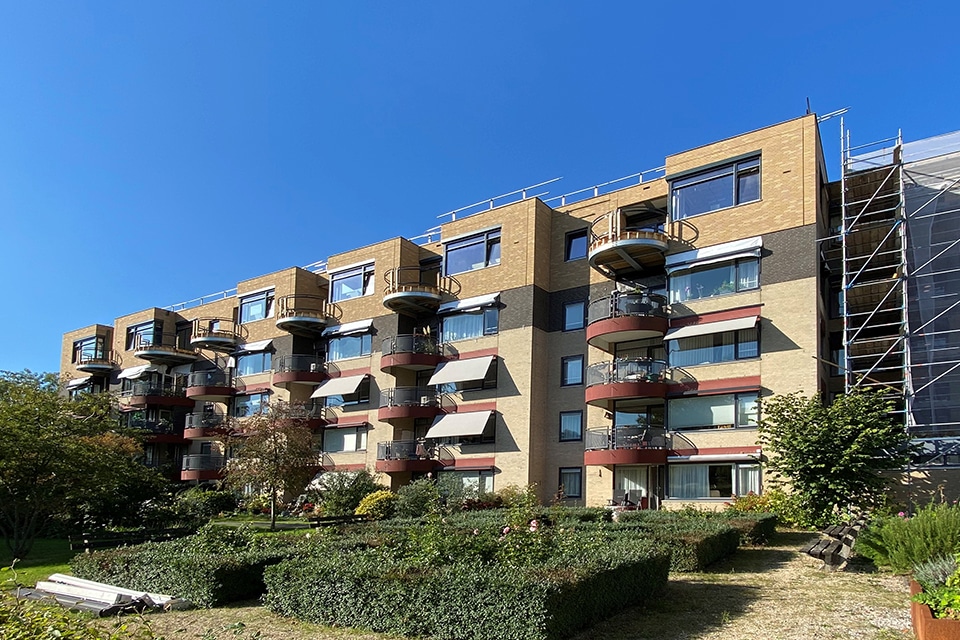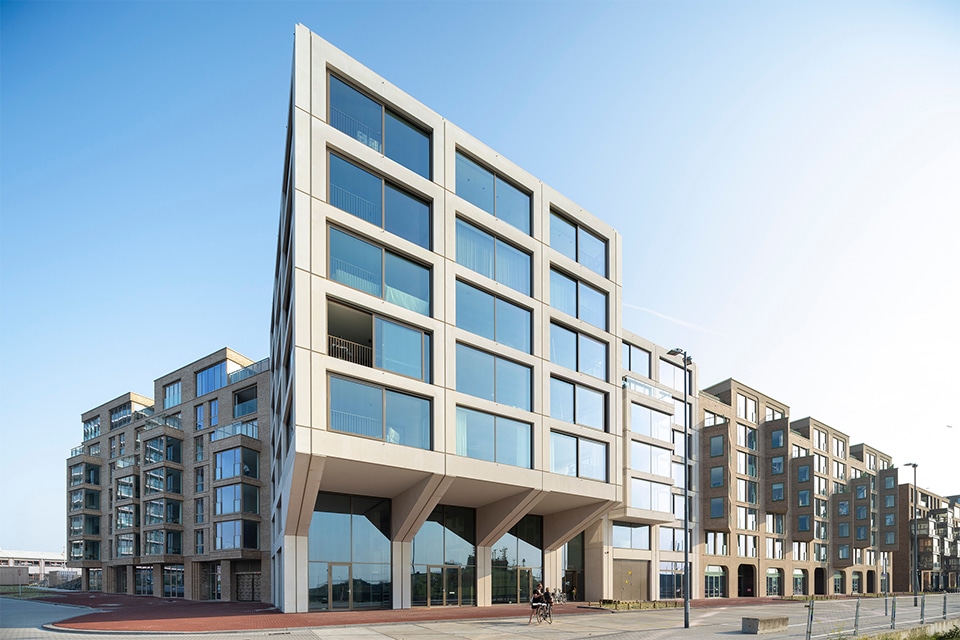
Fenemaplein Zandvoort: From paved parking deck to green utility roof
The Fenemaplein in Zandvoort has been redeveloped into a dune landscape that can facilitate events. A challenging assignment, for which Nophadrain as developer of green and utility roof systems provided the technical solutions. Sales Director Pieter Wesselink: "In collaboration with the municipality, landscape architect and contractor, drainage systems were chosen that were tailored to the final design: planting areas with marram grass, semi-paved paths and concrete pavement accessible to pedestrians and cars."
Fenemaplein is one of the oldest utility roofs in the Netherlands, originally a 5,000 m² paved square on the roof of a parking garage dating from the 1960s, situated on Zandvoort's boulevard. The starting point for the redesign, completed last winter, is the creation of an organic dune landscape that can facilitate events and has an emphatic connection with the boulevard.
Following a design by MTD Landscape Architects, organically shaped planting areas with marram grass and areas with a shell-like semi-paved surface have been laid out, surrounded by a tight framework of sand-colored concrete paving with a wave pattern. Three wide stairways provide access to the square from the lower boulevard.
Prior to the tender, Nophadrain, a specialist in green and utility roofs, was already in the picture to shape the technical design aspects of the drainage system and the entire structure of the utility roof. "We start where the roofer ends. The latter ensures that the roof is watertight by installing a roofing system. We then recommend how best to drain and retain rainwater based on the desired end appearance, construction and slope."
Sustainable use of space
The ND 600 Drainage System was chosen for the construction of the driveable area: a bubble film with extremely high compressive strength (approximately 1,200 kPa) on which a monofilament filter fabric is glued. The specific composition of this drainage system prevents the build-up of hydrostatic pressure on the roofing system and protects it from mechanical loads caused by passenger cars or large groups of pedestrians. The ND 5+1 Drainage System was used to build up the planting areas with sand and marram grass. "This product can buffer up to about 5.8 l/m² of water in its high studs. In addition, for roofs with little to no slope, the high stud ensures that excess water does not remain on the roofing system. On top of the drainage system are ND WSM-50 Water Reservoir Slabs. These mineral rock wool slabs provide even more water buffering (approximately 40 l/m²) and pass rainwater to the vegetation via capillary action. In this project, the slabs have a filter function for the fine dune sand above. Thus, the roof drains or filter layers cannot clog."
"By providing tailored advice, we were able to use our knowledge and expertise to achieve the desired end result of the architect and client," says Wesselink. "The desirability of utility roofs is increasing because of spatial densification, as well as climate change."




